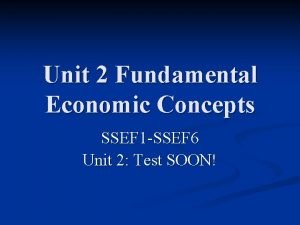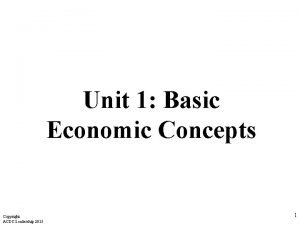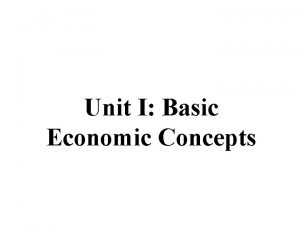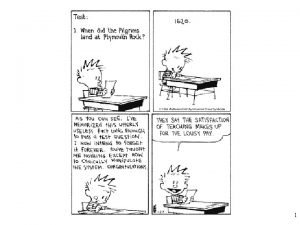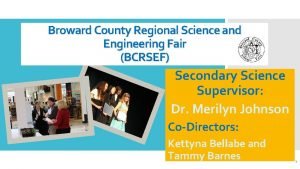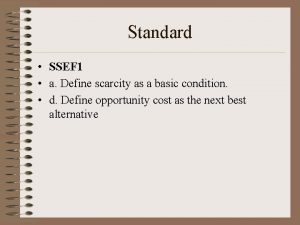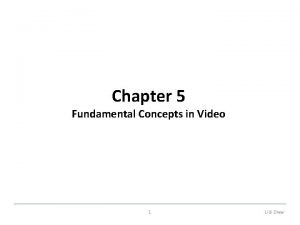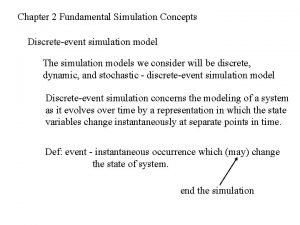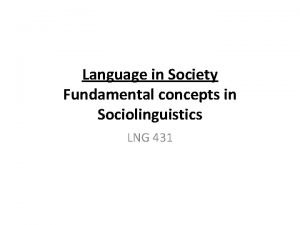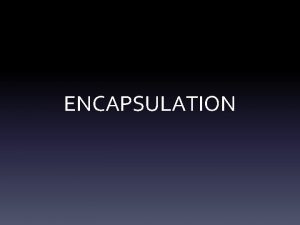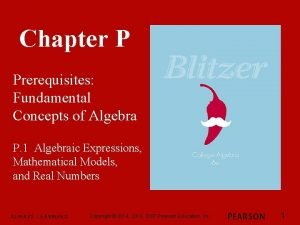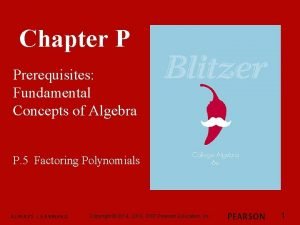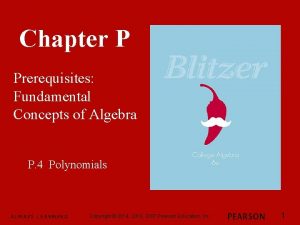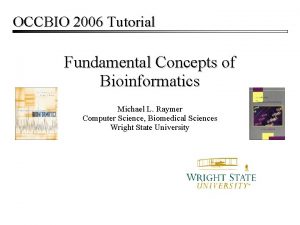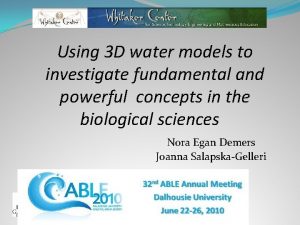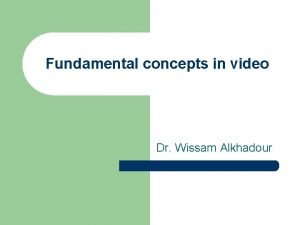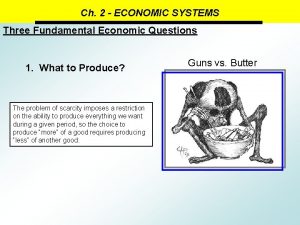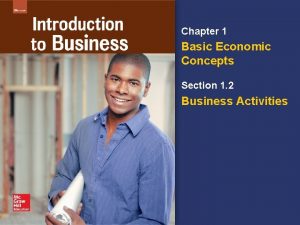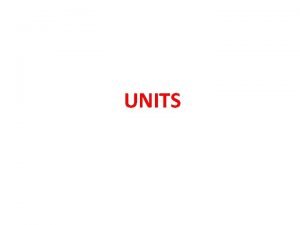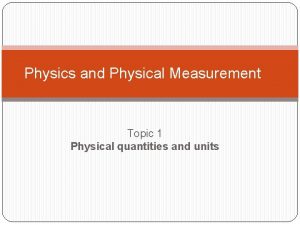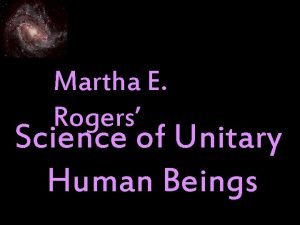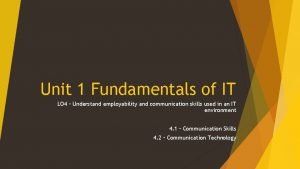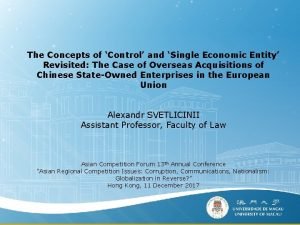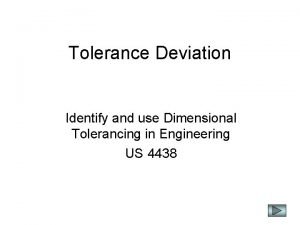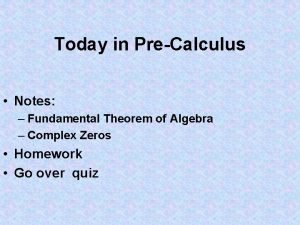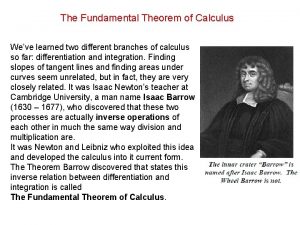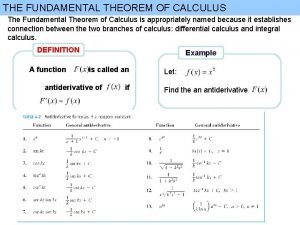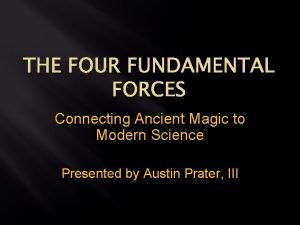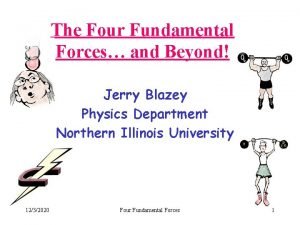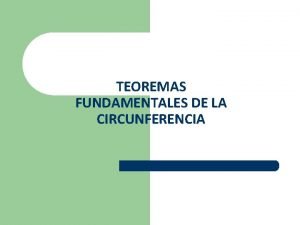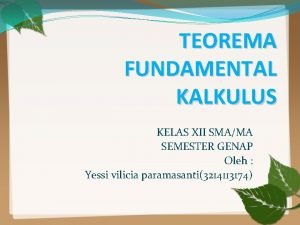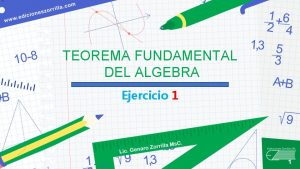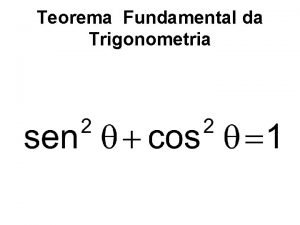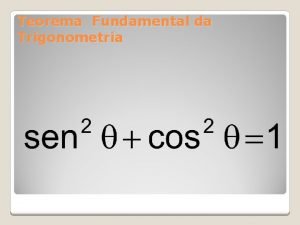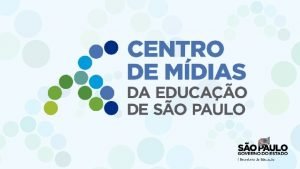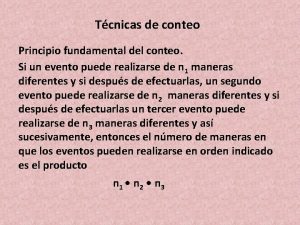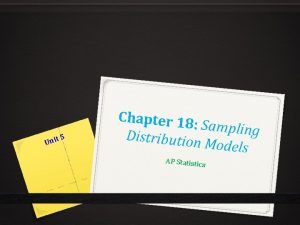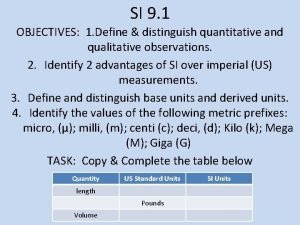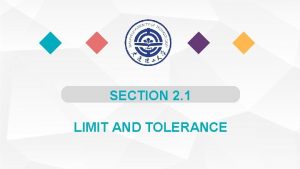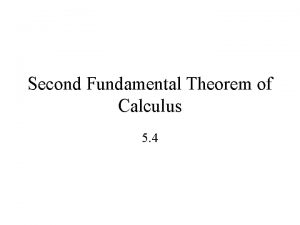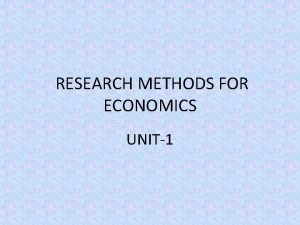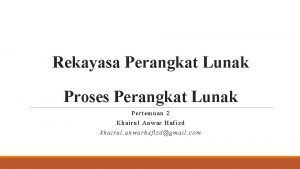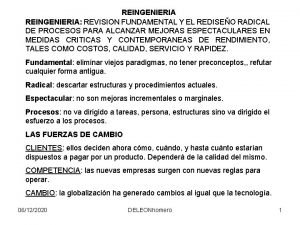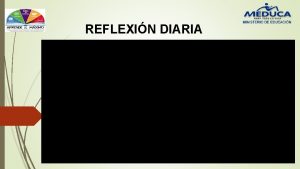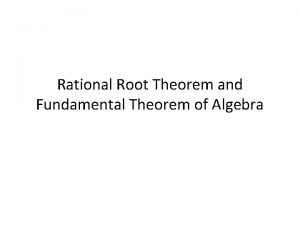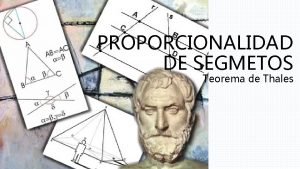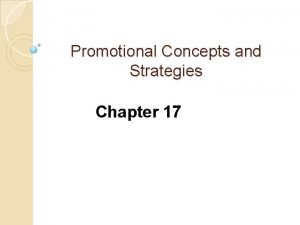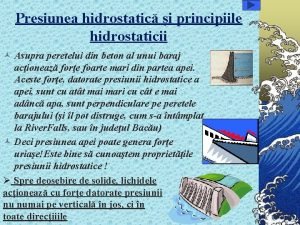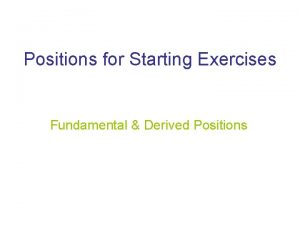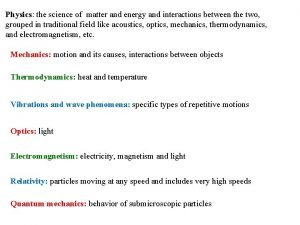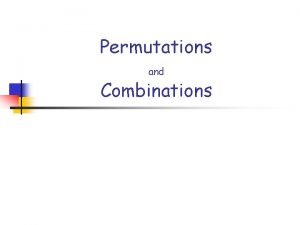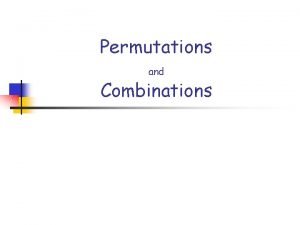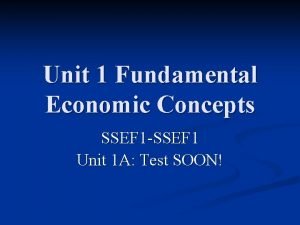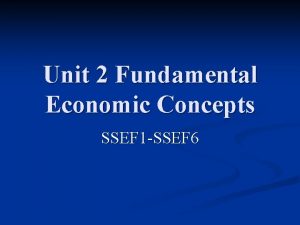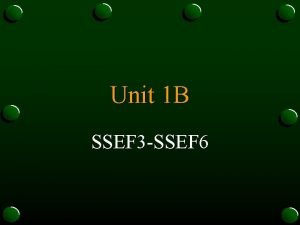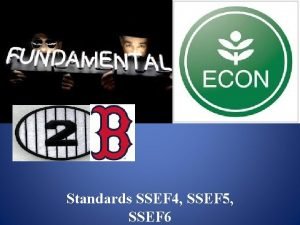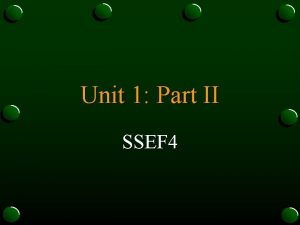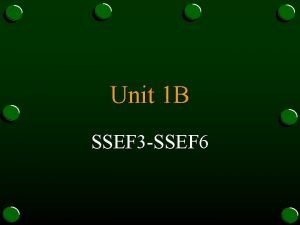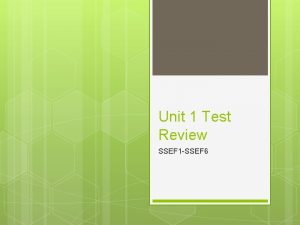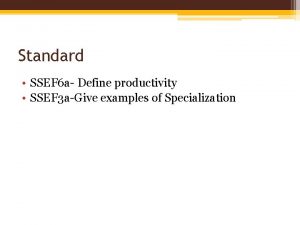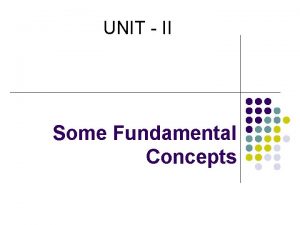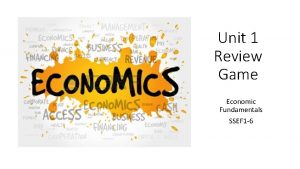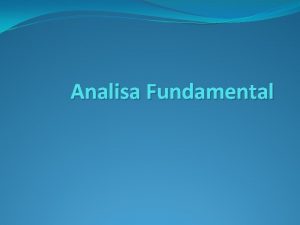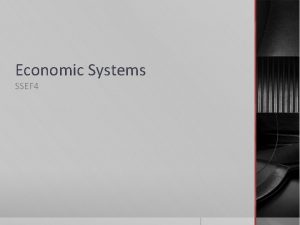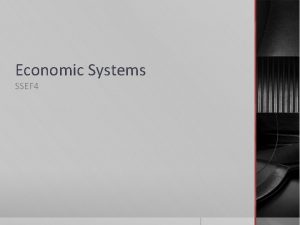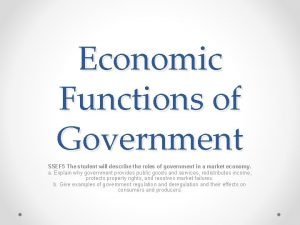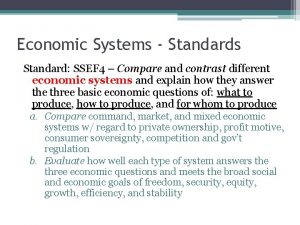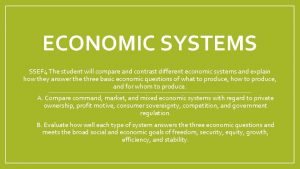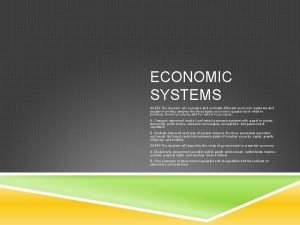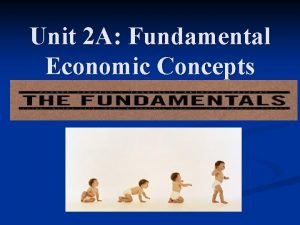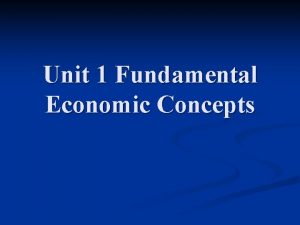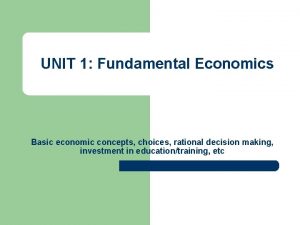Unit 2 Fundamental Economic Concepts SSEF 1 SSEF







































































- Slides: 71

Unit 2 Fundamental Economic Concepts SSEF 1 -SSEF 6 Unit 2: Test SOON!

What is Economics?

What is Economics? n Economics is the study of how people seek to satisfy their needs and wants by making choices.

n. A social scientist studying the allocation of scarce resources and goods. n. Allocate- Distribute according to some plan or system.

SSEF 1 n The student will explain why limited productive resources and unlimited wants result in scarcity, opportunity costs, and tradeoffs for individuals, businesses, and

SSEF 1: Element A Define scarcity as a basic condition that exists when unlimited wants exceed limited productive resources.

1. Scarcity and Choice n. A “need” is something that is necessary for survival (food, air, shelter) n. A “want” is something we desire that is not essential to survival.

n. Wants are unlimited while the resources (i. e. Money) are not!

Scarce: n. Short in supply

Scarcity n Scarcity implies limited quantities of resources to meet unlimited wants. n Unlimited wants exceed limited resources n Economics attempts to solve the problem of

Shortage vs. Scarcity n. A “shortage occurs” when producers will not or cannot offer goods or services. n Shortages can be temporary or long term. n “Scarcity” always exists because our needs and wants are always greater than our resource supply.

What does this picture represent?

n Why is social security a scarce resource?

What type of scarcity does this political cartoon represent?

SSEF 1: Element B Define and give examples of productive resources (factors of production) (e. g. , land (natural), labor (human), capital (capital goods),

What resources were used to produce the fruits and vegetables shown here?

Answer: #1 n. Natural Resources: are all of the raw materials in nature used to produce what humans need or want!

2. Resources n. Defined as those things which humans can put to productive use.

3. Productive Resources need to be properly processed in order to produce things that are needed and/or wanted.

4. Factors of Production n Economists call the resources that are used to make all goods and services the factors of production. n Four basic Factors of production: land, labor, entrepreneurship and capital

i. Resource/Factors of Production n. The inputs land, labor, capitol, and entrepreneurship-used by society to produce outputs which are often finished products… example:

Factors of Production (cont. ) n. Capital is any human-made resource that is used to produce

• Land refers to all natural resources used to produce goods and services.

Land cont. It is more than the land we stand on it is timber, water, iron ore, crude oil, natural gas, coal, fish, uranium.

• b. Labor is the effort that a person devotes to a task for which that person is paid.

n Contribution by the human workers to the production process. n Labor Includes: Physical and Mental efforts, highly skilled, and un skilled. A Doctor and an assembly-line work are all equal!

n Physical c. Capital capital includes buildings, machinery, tools, all structures and equipment used in the manufacturing process. etc. n Human capital is the knowledge and skills a worker gains through education and experience.

n. It assists in saving time and money when producing goods.

d. Entrepreneurship n. A specific form of labor. It consist of the creative, managerial, and risktaking capabilities that are involved in starting up and running a

5. Goods vs. Services n Goods are physical objects such as shoes and shirts. n Services are actions or activities that one person performs for another.

Thoughts: n. All goods and services are scarce because the land, labor, and capital used to create them are scarce.

Can you identify the physical capital and human capital in this cartoon?

Where did they come from? ?

Journey of the French Fry…. n Started as a potato; planted in soil, had to be watered, fertilized, harvested, processed, frozen, transported to a supermarket. n Cooked, sprinkled with salt, and eaten. n

Scarce resources used to make the French Fry… Land: Small quantity of land for agriculture n Labor: Limited amount of people available to plant, harvest, and process the potato crops. n Physical Capital: farming equipment n

Pop Quiz: Good or Service n. Number Your Paper 1 - 12. n. Good or Service


SSEF 1: Element C List a variety of strategies for allocating scarce resources.

1. Scarcity: n. Is the lack of adequate resources to obtain all of one’s wants.

Strategies for allocations a. Higher Prices. By raising prices, companies limit the number of consumers who can actually buy the product. This allows the producers to still make money while making sure the limited supply of a product lasts longer than it normally

b. Government Regulation n. Government establishes price ceiling or price floor

i. Price ceiling: means that the price of a certain good or service is not allowed to rise above a certain level. ii. Price floor: means that a certain good or service is not allowed to drop below a certain price

iii. Rationing: only allows citizens to purchase so much of a scarce good to make sure there is enough

iv. Lotteries: ex. Ga Pre-K v. Markets: Farmers Market: Local Goods vi. Redistribution of Income: Income tax used to provide

SSEF 1: Element D Define opportunity cost as the next best alternative given up when individuals, businesses, and governments confront scarcity by making choices.

1. Trade-off

n. Every time people make a choice about how to use their resources, the must make a trade-off! People gain something, but also give up

2. Opportunity Cost n Is the option you gave up by making a choice. n You face an opportunity cost every time you decide how to use your scarce productive resource!

Making Choices…EFFICIENTLY SSEF 2: The student will give examples of how rational decision making entails comparing the marginal benefits and the marginal costs of an

SSEF 2: Element A. a. Illustrate by means of a production possibilities curve the trade offs between two options.

n. Choices: the Decision to produce one good instead of another.

Remember: n. Trade Offs are all the alternatives that we give up whenever we choose one course of action over another.

Types of Trade-Offs n Individual Trade Offs n Businesses n Society Trade Offs: “Guns or Butter” n Should we produce more military goods (“guns”) or more consumer goods (ex.

Remember: Opportunity Costs n. The most desirable alternative given up as the result of a decision is called the opportunity cost. n. The Items we give up by

How could this have been prevented?

? ? ? If you choose to use your savings to pay off a credit card bill instead of going on the senior trip, what is your opportunity cost?

What is the opportunity cost represented in this cartoon?

n. Opportunity Cost is associated with scarcity. Why? n. OC is the value of the best alternative forgone when a choice is made

n Every economic decision must determine which tradeoffs are most beneficial. Trade-offs involves giving up one option for another.

1. Production Possibilities Curve: n. Depicts how much of a particular product can be produced given the limited amount of resources at a company or individuals disposal.

Productions Possibilities Curve (PPC) n Graphical representation of how an economy makes decisions n Shows the choices an economy can make with respect to its available resources

Interpreting the PPC n All points on the curve represent the efficient production of goods and services (you are using your resources well) n Any point inside the curve represents an underutilization of resources (you’re wasting

Interpreting the PPC n All points on the curve represent the efficient production of goods and services (you are using your resources well) n Any point inside the curve represents an underutilization of resources (you’re wasting

Interpreting the PPC/PPF n Points on the curve – efficient combination of goods/services n Points inside (under) the curve – inefficient use of resources n Points outside the curve – unattainable points (current productive resources will not allow the economy to produce

Why are PPCs/PPFs valuable to decision-makers? n Graphical illustration of opportunity cost to produce more or one good (or service) n Shows how efficient (or inefficient) an economy is working n Shows growth or reduction

Why would the PPC/PPF move? n When the quantity or quality of land, labor, capital, or technology grows, the ENTIRE PPC will shift to the right n When the quantity or quality of land, labor, and capital shrinks, the ENTIRE PPC will shift to

SSEF 2: Element B Explain that rational decisions occur when the marginal benefits of an action equal or exceed the marginal

1. Marginal Cost n. Is the cost of the decision once it is weighted against the benefits.

2. Marginal Benefits n. Refers to the amount of Benefit a person, business, or government receives once the cost of their decision is considered.

Marginal Costs vs. Marginal Benefits n The additional cost incurred from one more unit (cost of processing one more item) n The additional benefit gained from one more unit (benefit associated with that one additional item)

3. Thinking at the Margin n When you’re trying to decide, “how much more, or how much less? ”…you are thinking at the margin Rational Decisions are made when the marginal benefits
 Ssef price list
Ssef price list Basic concept of managerial economics
Basic concept of managerial economics Ap macro unit 1 basic economic concepts
Ap macro unit 1 basic economic concepts Unit 1: basic economic concepts answer key
Unit 1: basic economic concepts answer key Unit 1 basic economic concepts
Unit 1 basic economic concepts Ssef florida
Ssef florida Broward county science fair
Broward county science fair Ssef price list
Ssef price list Secam stands for
Secam stands for Fundamental simulation concepts
Fundamental simulation concepts Fundamental concepts of sociolinguistics
Fundamental concepts of sociolinguistics Four fundamental oop concepts
Four fundamental oop concepts Prerequisites fundamental concepts of algebra
Prerequisites fundamental concepts of algebra Chapter p prerequisites fundamental concepts of algebra
Chapter p prerequisites fundamental concepts of algebra Chapter p prerequisites
Chapter p prerequisites Occbio
Occbio Fundamental and powerful concepts
Fundamental and powerful concepts Discounting principle in managerial economics
Discounting principle in managerial economics Fundamental concepts in video
Fundamental concepts in video What are the five fundamental questions
What are the five fundamental questions The three fundamental economic questions
The three fundamental economic questions Chapter 1 activity basic concepts
Chapter 1 activity basic concepts Economic growth vs economic development
Economic growth vs economic development Difference between economic growth and economic development
Difference between economic growth and economic development Economic systems lesson 2 our economic choices
Economic systems lesson 2 our economic choices Unit 10, unit 10 review tests, unit 10 general test
Unit 10, unit 10 review tests, unit 10 general test Seven si units
Seven si units Difference between fundamental and derived unit
Difference between fundamental and derived unit The fundamental unit of the living system by rogers is
The fundamental unit of the living system by rogers is Unit 1 fundamentals of it
Unit 1 fundamentals of it Apush unit 2 key concepts
Apush unit 2 key concepts Single economic unit
Single economic unit Suatu lembaga yang
Suatu lembaga yang Hyp opp adj
Hyp opp adj English unit conversion
English unit conversion Unit 1 test algebra 2 answers
Unit 1 test algebra 2 answers Unit cost rekam medis
Unit cost rekam medis Unit process and unit operation
Unit process and unit operation Unit operation and unit process
Unit operation and unit process Setiap unit akuntansi dianggap sebagai unit yang mandiri
Setiap unit akuntansi dianggap sebagai unit yang mandiri Fundamental steps in digital image processing
Fundamental steps in digital image processing Antecedents of modern quality management
Antecedents of modern quality management Deviation
Deviation Fundamental theorem.of algebra
Fundamental theorem.of algebra Calculus theorems
Calculus theorems Fundamental theorem
Fundamental theorem Four fundamental forces
Four fundamental forces Larry's four forces
Larry's four forces Teoremas en la circunferencia
Teoremas en la circunferencia Teorema fundamental kalkulus
Teorema fundamental kalkulus Teorema fundamental del algebra
Teorema fundamental del algebra Arcos notaveis
Arcos notaveis Tabelas de seno e cosseno
Tabelas de seno e cosseno Projeto de vida ensino fundamental
Projeto de vida ensino fundamental Principio fundamental del conteo
Principio fundamental del conteo Central limit theorem conditions
Central limit theorem conditions 7 fundamental units
7 fundamental units Fundamental deviation
Fundamental deviation Finding derivative with fundamental theorem of calculus
Finding derivative with fundamental theorem of calculus Applied vs fundamental research
Applied vs fundamental research Aktivitas fundamental dari proses perangkat lunak
Aktivitas fundamental dari proses perangkat lunak Revisión fundamental
Revisión fundamental Derechos fundamentales del aprendizaje
Derechos fundamentales del aprendizaje Rational zero therom
Rational zero therom Segmetos
Segmetos What is the fundamental concept behind premium marketing
What is the fundamental concept behind premium marketing Principiul fundamental al hidrostaticii formula
Principiul fundamental al hidrostaticii formula Positions used in nursing patient
Positions used in nursing patient Kamasutra standing positions
Kamasutra standing positions 7 fundamental si units
7 fundamental si units Counting principle
Counting principle Combination equation
Combination equation
